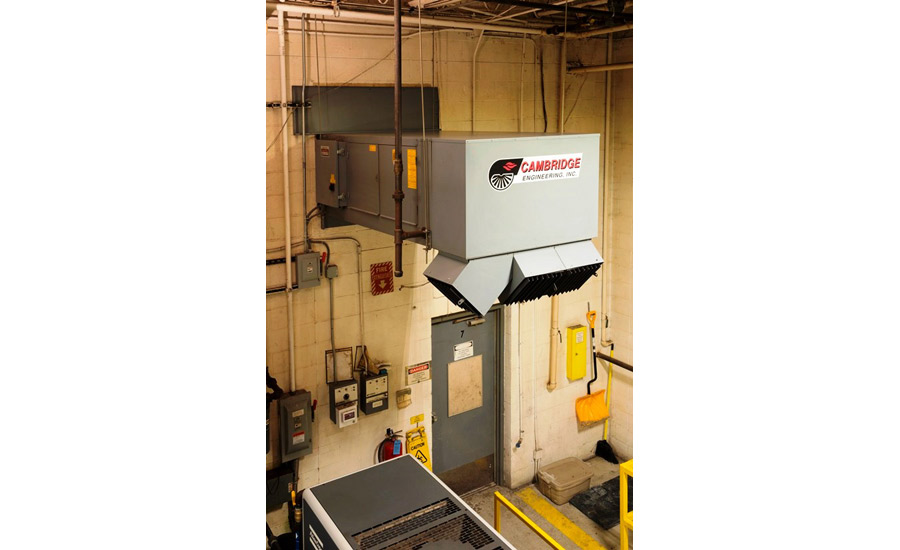A Giant Eagle distributor in Cleveland needed to replace inefficient unit heaters that were used to heat its 61-dock door, 540,700-sq-ft distribution facility. The unit heaters didn’t provide a comfortable working environment for employees and generated excessive utility bills during the winter heating months. Compounding the problem was the fact that the installation of any new heating system, no matter what time of the year, needed to occur during production hours with zero tolerance for negative impact on the production line.
Giant Eagle’s two main requirements for a new system were to lower their monthly heating costs and to provide a more comfortable working environment for employees during the winter, all while meeting ROI requirements.
Cambridge Engineering, with the help of its regional manufacturer’s representative (Western Reserve Energy Corp.), worked with Giant Eagle to design a solution that would not only meet their needs but exceed their ROI requirements. The team presented Giant Eagle with a heating technology solution called High Temperature Heating and Ventilation (HTHV) manufactured by Cambridge Engineering. The HTHV technology, a 92%-efficient direct fired technology, is designed to provide three main benefits.
The first benefit is lower utility costs. As a 92% thermal efficient solution, Cambridge officials said the HTHV technology would dramatically lower utility costs when compared to the standard efficiency unit heaters. HTHV technology has a minimum discharge temperature of 150°F. It is because of this higher discharge temperature that HTHV technologies are able to heat structures using less natural gas.
Next, the technology provides more even temperatures throughout the facility. The HTHV technology, with its integral high static blower, provides better temperature distribution without the use of external destratification fans. Even in high bay buildings with ceiling heights of 30 ft or greater, the temperature difference from ceiling to floor is no greater than 4 degrees.
Finally, the system aims to provide better indoor air quality. Since the HTHV technology uses 100% outside air, the technology is also a ventilation device as well as a heating solution. More outside air means better IAQ for the occupants. Buildings don’t need to breathe, but people do.
As part of the process, Cambridge Engineering, the local mechanical contractor, and the manufacturing representative met with Giant Eagle to conduct a site survey to ensure that the solution provided would meet their energy use, comfort, and ROI requirements. The survey included an energy use analysis comparing the new HTHV equipment to the old unit heaters. The main goal of the analysis was to provide the team with the information needed to estimate the potential energy savings from moving to the new HTHV technology.
The site survey also provided the necessary information to calculate the heat load required to heat the facility. It was determined that six separate Cambridge HTHV units — two S3200s, two S1200s, and two S950s — would be required and that they could realize a 30% savings on their utility bills. The HTHV equipment would also qualify for commercial rebates through their natural gas utility provider, which would help with equipment costs and ROI.
In addition to the estimated gas savings and the utility rebates for the equipment, the solution was designed so that there would be no disruption to the production line. After completion of the project, Cambridge officials said that Giant Eagle has not only achieved but exceeded its goals from the heating retrofit project.
With the utility savings, Giant Eagle was able to simultaneously add mechanical ventilation to a building that had none before. Providing fresh air through tempered, mechanical ventilation improves working conditions and increases employee productivity. The workforce now has an environment where they no longer need to worry about uncomfortable surroundings. Instead, they have even, comfortable temperatures from head to toe; an exceptional work environment and lower utility bills have satisfied both the company and its employees.




